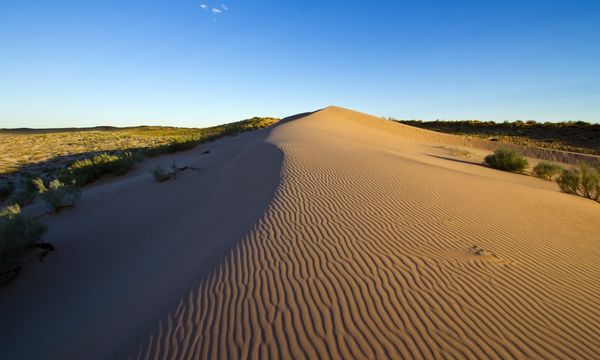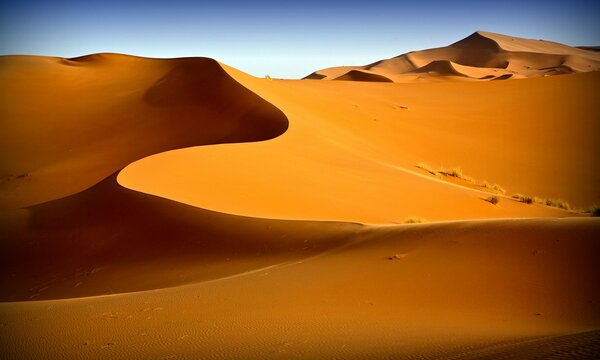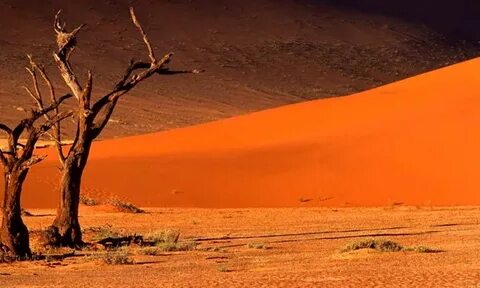Call Us
8:00am - 17:00PM
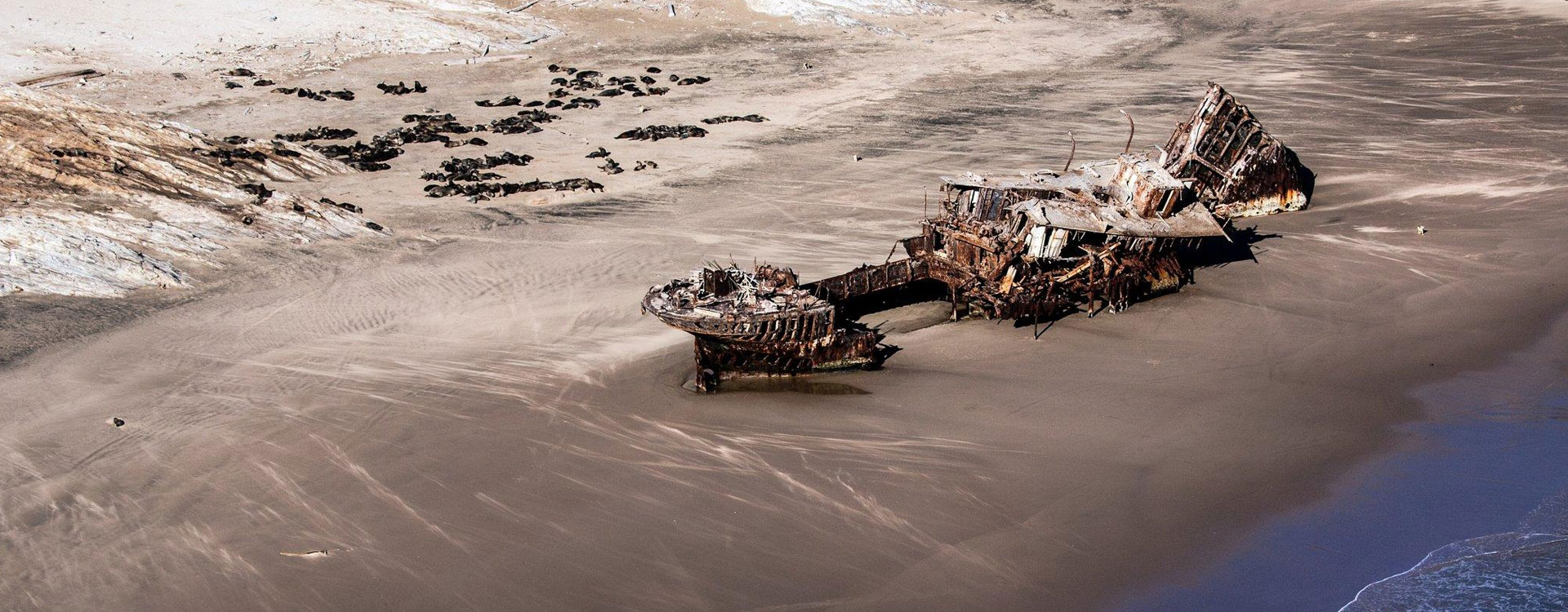
Skeleteon Coast
About Skeleteon Coast
Skeleton Coast is Namibia’s most strange yet fascinating place. This comes under places on Earth, nature’s unique creation can be seen. We called it strange because this place is abandoned and we called it can fascinate because this is where the desert meets the sea.
The rusted wrecked ships resemble Hollywood scenes, forming big tides in the backdrop.
Windhoek Tours and Safaris
We Think You’ll Love
Best time to visit
The Best Time to Visit Skeleton Coast stretches from October through March. During these warmer months, a sprinkle of rain clears up the skies and diminishes the morning fog, making the nights comfortably warm. Although this period might not be the peak for wildlife sightings in nearby Etosha NP, the Skeleton Coast itself offers clearer views and milder weather, perfect for exploring its haunting beauty and vast landscapes.
Wildlife
Skeleton Coast is a haven for marine life, boasting vast colonies of Cape fur seals at Cape Cross, accessible via wooden boardwalks. The shores also play host to the elusive brown hyena and the rare Heaviside's dolphins. The Uniab River mouth draws oryx, springbok, and greater kudu in from Kaokaland, making this coast a diverse and vibrant Namibia Wildlife destination.
What To Experience
We Think You Will Love

Fishing

Surfing
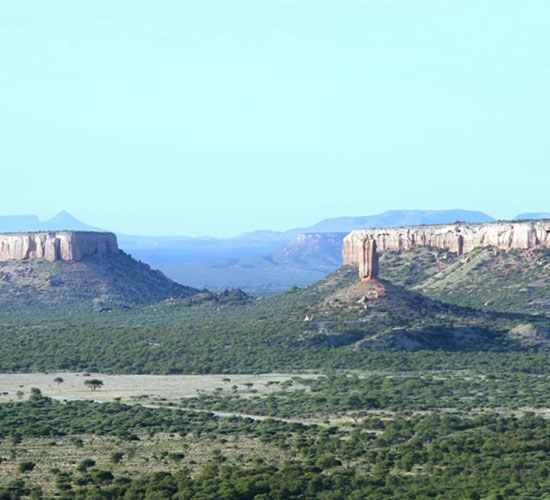
Hike the Ugab River Trail
Travel Guide For Skeleton Coast
We Think You’ll Love
Map of Skeleton Coast
The map of the Skeleton Coast in Namibia shows a long stretch of coastline along the Atlantic Ocean, extending from the Kunene River in the north to the Ugab River in the south. The region is characterized by a harsh desert landscape, with dunes, rocky outcrops, and sparse vegetation.
The map may also show the locations of various landmarks and attractions, such as the Cape Cross seal colony, the remains of shipwrecks, and the Skeleton Coast National Park. The park is home to various rare and unique wildlife, including desert-adapted elephants, lions, hyenas, and numerous bird species.

History of Skeleton Coast
The History of Skeleton Coast is connected with shipwrecks and stories of sailors who died here in search of water and food. The oldest shipwreck on the Skelton Coast was dated back to 1530.
Originally inhabited by the Himba people, European colonizers began exploring the area in the 19th century, with German colonizers establishing a trading post at Cape Cross in 1893. During World War I, the German army established a military base at Swakopmund, and after the war, the area was annexed by South Africa and used for diamond mining.
Now, the Skeleton Coast is a popular tourist destination, designated as the Skeleton Coast National Park in the 1960s to protect its unique ecology and wildlife, including rare desert-adapted elephants, lions, and hyenas.
Geography and Climate of Skeleton Coast
Skeleton Coast has some unique geological forms. The landscape of skeleton coasts ranges from sweeping deserts to dunes, and mountain ranges. The southern part of the Skeleton coast is filled with unique gravel plains and the north part of the Skeleton coast is largely occupied with dunes.
Talking about the climate pattern of Skeleton Coast, despite being desert, the Skeleton Coast does not experience as much heat, as other parts of Namibia. It’s because of the cold breeze of the Atlantic Ocean. It’s Benguela Current, which brings the cold air to the coastal part.
The daytime temperature on the Skeleton Coast stays around 20 degrees Celsius.
Best Time To Visit Skeleton Coast
If you’re planning a Skeleton Coast Tour, you should be aware of what is the best time to visit. As we have mentioned above the overall best time is from October to March. The sky remains clear in these months and mornings are less foggy.
These months are ideal for specific visits to the Skeleton Coast. And, it’s not ideal for those who want to discover wildlife in Namibia’s National Parks.
Below, we have categorized the Best Time to Visit Skeleton Coast in two parts, one is the dry season, and the other is the wet season.
The dry season
- The dry season in the Skeleton Coast runs from May to October.
- the days in these months stay cool, (except in October)
- the main drawback the mornings are colder and this place often get windy and misty
The Wet Season
- From November to April, the Skeleton Coast is considered the wet season.
- Although it’s the wet season, it doesn’t rain much the morning mostly remains less foggy.
- The middle part of the days remains hot and these months are not ideal for those who are looking for game-viewing in Etosha National Park.
Month by month Guide of Best Time to Visit
Here's a month-by-month guide to help you plan your Skeleton Coast Tour.
January - February:
These months are in the middle of the southern hemisphere summer and can be quite hot. Wildlife may be harder to spot due to the heat and vegetation growth from the recent rains. Insects, like mosquitoes, can also be more prevalent during this time.
March - April:
As the summer season starts to cool down, temperatures become more comfortable. Wildlife sightings may improve as animals begin to congregate around water sources.
May - June:
This period marks the beginning of the dry season. The weather is cooler and more pleasant, making it a good time for game viewing. Wildlife is easier to spot as the vegetation starts to thin out and animals gather around waterholes.
July - August:
These are the coolest and driest months of the year. Daytime temperatures are comfortable, but nights can be quite cold. Wildlife sightings are generally good during this period, as animals continue to congregate around water sources.
September - October:
The dry season continues, and temperatures begin to rise. Wildlife sightings remain good as water sources become scarcer, drawing animals to the remaining waterholes.
November - December:
These months mark the beginning of the rainy season. While temperatures can be hot, the landscape starts to transform with the arrival of the rain. Wildlife may be more dispersed due to the increased availability of water and vegetation,
Getting to Skeleton Coast
The Skeleton Coast is a remote and rugged area located along the western coast of Namibia. Here are some steps to help you get there: Fly to Windhoek: The closest major city to the Skeleton Coast is Windhoek, the capital of Namibia. You can find flights from major cities in Africa, Europe, and other parts of the world. Book a guided tour: The Skeleton Coast is a remote and inhospitable area, and it is recommended that you book a guided tour to explore it. There are several tour companies that offer guided tours of the Skeleton Coast, such as Skeleton Coast Safaris, Ultimate Safaris, and others. Choose your mode of transportation: Most Skeleton Coast guided tours use 4x4 vehicles, light aircraft, and boats to explore the area. Depending on the tour company, you may spend several days traveling by land, air, and sea to see the highlights of the Skeleton Coast.Wildlife in Skeleton Coast
Skeleton Coast Is a national park and should not be considered a prime destination to see diverse wildlife. Still, Skeleton coast safari lets you spot some unique animals such as Gemsbok (oryx), springbok, steenbok, scrub hare, and nosy ground squirrel.
If you’re in Skeleton Coast National Park, you’re most likely to spot the deserted adapted lions, elephants, giraffes, zebra, and spotted and brown hyenas.
A large plated armor-plated lizard, Gerrhosaurus Skoogi, can be easily spotted in the Skeleton coast. Skeleton Coast is also home to some endemic insects, like Black and White Tenebrionid Beetles.
Talking about the Marine Wildlife, as Skeleton Coast submerges into the sea, this place has spectacular marine wildlife to spot. This wildlife includes Benguela Dolphins, Killer Whales, and Humpback Whales. And, not to mention, here you can visit the Cape Cross, which is a haven for more than 210,000 cape fur seals, their colony is known as Cape Cross Colony.
Birdlife in Skeleton Coast
Birds’ species are abundant in the Skeleton Coast area, both varying in land and sea. This place abodes more than 200 bird species, including flamingos, Cape Gannets, Grey Loerie, and Chestnut-banded Plovers.
Skeleton Coast National Park
Skeleton Coast National Park will be one of the best visits on Skeleton Coast Safaris. Established in 1971, this national park is often considered Namibia’s finest national park. This park is divided into two parts, the Northern Part, which is a little hard to access, and the southern, where you can visit the seal colony.
Skeleton coast national park houses desert-adapted lions, elephants, giraffes, and blacked-backed jackals. There’s an estimated number of over 10,000 animals, which can be spotted here.
The Skeleton Coast is home to more than 50,000 people from Himba Tribe, these tribes are mostly known for surviving in harsh deserted conditions.
Skeleton Coast Attractions
The Skeleton Coast is a fascinating and unique area of Namibia with a variety of attractions. Here are some of the top attractions you can expect to see while exploring the Skeleton Coast:
Shipwrecks: The Skeleton Coast is known for its shipwrecks, many of which are still visible along the coastline. Some of the most famous shipwrecks include the Eduard Bohlen, the Otavi, and the Ventura.
Wildlife: The Skeleton Coast is home to a variety of wildlife, including desert-adapted elephants, lions, giraffes, hyenas, and many species of birds. You can also spot seals, dolphins, and whales in the ocean.
Sand dunes: The Skeleton Coast is also known for its stunning sand dunes, which can be explored on foot or by vehicle. Some of the most popular dunes include the Sossusvlei Dunes and Dune 7, which is one of the tallest sand dunes in the world.
Rock formations: The Skeleton Coast is home to unique rock formations, such as the Organ Pipes, which are towering basalt columns that resemble a pipe organ.
Coastal scenery: The coastline of the Skeleton Coast is rugged and dramatic, with towering cliffs, rocky outcroppings, and vast stretches of sand.
Culture and history: The Skeleton Coast is also rich in cultural and historical significance, with indigenous peoples, colonial history, and mining operations all playing a role in the area's past and present.
Places to visit in Skeleton Coast
From Skeleton National Park, Henties Bay to Cape Cross Seal Reserve, there are many places that visitors can explore on a Skeleton Coast Tour. Here are some of them
Cape Cross Seal Reserve
Cape Cross Seal Reserve is just 53 km away from the north of Henties Bay. This Cape Cross Seal Reserve is a breeding colony of 150,000-210,000 Cape fur seals. Looking at such a staggering number of fur seals is always impressive.
Cape Cross Seal Reserve has also some historically significant importance. In 1486, Europeans were the first to set foot on this coast.
Sand Dunes
Sand Dunes are the best attraction of the Skeleton Coast. They all are formed in a crescent-shaped barchan. These sand dunes are formed by the southwest wind. Here, you can easily spot black-jackal and brown hyenas. Apart from these animals, Springboks and gemsbok are common to spot who can easily survive in such arid conditions.
In recent years, Zebras and hyenas, lions and leopards have been spotted here. This deserted place has also attracted some elephant species.
Namib Desert
The Namib Desert is considered some of the oldest deserts in the world. Still, no one knows how old it is. The Namibia Desert abodes some unique desert-adapted animals including mountain zebra (Equus Zebra), gemsbok (Oryx Gazella), short-eared elephant shrew, Grant’s golden mole, and Karoo Bustard.
Also, visitors to the Namib Desert can spot unique desert-adapted lions.
Skeleton Coast National Park
Located on the shoreline of northwest Namibia, the Skeleton Coast National Park, spanning over an area of 16,400 square kilometres. Locals often describe this park as The Land God Made in Anger. Along with game-viewing, visitors to this national park can enjoy fly-in safaris.
Some commonly spotted animals in Skeleton Coast National Park includes lion, giraffes, elephant, hyena, black rhinos, springbok and baboon.
Do you know-
The sand on the skeleton coast moves faster than any other sands in the world, at a speed of 50 feet per year.
Adventure And Activities In Skeleton Coast
A Skeleton Coats Tour offers a wide range activity ranging from exploring the Skeleton coast on a Light Air Craft to Flying over the ship graveyard.
Surfing along the Skeleton Coast
In recent years, the Skeleton Coast has been, a favourite destination for surfing. However, all those who are planning to surf in Skeleton Coast, then know this place is an isolated part of Namibia. And, certainly, Skeleton Coast does not have many services or conveniences to offer. So, visitors must bring their own equipment and camping gear.
Shipwreck Tours
The Skeleton Coast is a graveyard for numerous shipwrecks that have succumbed to its perilous waters throughout history. Exploring these maritime relics offers an eerie and fascinating insight into the past. Guided tours are available, taking you to the most iconic shipwrecks such as the Eduard Bohlen, the Zeila, and the Suiderkus. Each ship has a story to tell, and the surrounding desolate landscape only adds to its haunting allure.
Wildlife Safaris
Despite its desolate appearance, the Skeleton Coast is home to a diverse array of wildlife. Embark on a Skeleton Coast safari with a knowledgeable guide to discover the surprising number of species that have adapted to life in this harsh environment. You may encounter desert-adapted elephants, lions, giraffes, and brown hyenas, as well as Cape fur seals, which can be found in their thousands at the Cape Cross Seal Reserve.
Hot Air Balloon Rides
Experience the vast beauty of the Skeleton Coast from above with a breathtaking hot air balloon ride. This unique perspective provides a bird's eye view of the sweeping dunes, the Atlantic Ocean, and the contrasting ecosystems that meet along the coastline. Drift peacefully over the landscape and appreciate the otherworldly sights that make this region so captivating.
Coastal Hiking
The Skeleton Coast offers some challenging and rewarding hiking opportunities for those looking to explore on foot. A popular route is the Ugab River Hiking Trail, which takes you along the riverbed and through the canyons, offering a chance to discover hidden oases and ancient rock art. Another option is to traverse the dunes and rocky cliffs of the coastline, where you can witness the remarkable sight of the desert meeting the sea.
Off-Road 4x4 Adventures
For those seeking adrenaline-pumping excitement, an off-road 4x4 adventure is a must. Traverse the Skeleton Coast's rugged terrain, taking in the dramatic landscapes and uncovering hidden gems along the way. Guided tours will ensure you're in safe hands while you navigate the challenging dunes and rocky outcrops of this extraordinary environment.
Kayaking and Fishing
The cold Benguela Current that flows along the Skeleton Coast brings with it an abundance of marine life, making it an ideal location for kayaking and fishing. Paddle through the pristine waters, encountering seals, dolphins, and even whales, or try your hand at catching some of the local fish species. Remember to obtain the necessary permits and follow local regulations to ensure a sustainable and responsible experience.
Photographing at Namibia’s most picturesque destination
Skeleton Coast in Namibia, is a perfect destination in Namibia for photography. Three wrecks, namely The Eduard Bohlen, the Dunedin Star and the Zeila, are the main interesting picture subjects of the Skeleton Coast. And, not to mention the seal colonies also give perfect opportunities to wildlife photographers.
And the dunes that encircled the Skeleton Coast are some of the best picturesque objects to capture. The dune’s dramatic shadows and patterns in the changing simply look stunning.
Seeing the flocking birds near Sandwich Harbour
For Bird enthusiasts, Sandwich Harbour is a true birding paradise. Starting from Flamingos, pelicans, cormorants and terns are some of the commonly seen bird species in Sandwich Harbour.
Visitors have the option of exploring, the surrounding area by 4x4, vehicle. Summers months are perfect for observing bird species, and also perfect for boat excursions.
Go on a Desert Elephant Safari
Have you heard about Elephant Safaris? it is unique adventure activity to take part in Skeleton Coast Tour. This elephant safari allows you to spot the elephants that have adapted to this harsh arid condition.
Generally, these elephants’ bodies have developed differently compared to elephants that live in other parts of Africa. They have longer legs and smaller bodies. ‘
Desert Elephant Safaris are carried out on 4x4 vehicles in the most inhospitable parts of Skeleton Coast.
Visiting Skeleton Coast Marine Park
The Skeleton Coast Marine Park is an incredible destination to sot the marine ecosystem, like coastal marshes, rocky coasts, and offshore islands. And, in this Marine Park, you can spot marine animals such as seals, dolphins, whales and other aquatic bird species.
Discover the Salt Pans
The striking contrast between, the white sand and blue creates a unique photographic opportunity in the Salt Pans. Skeleton Coast Safaris, lets you explore the Salt Pan in a 4x4 game vehicle.
Take a tour of Himba Village
From the sky, the Skeleton Coast looks barren, but this place is home to a tribe called Himba. Travellers on Skeleton Coast Safari can take a tour of Himba Village, where they can learn about the Himba Tribe and its unique way of surviving in such harsh deserted conditions.
Accommodation in Skeleton Coast
Skeleton Coast offers a wide range of accommodations ranging from Campsites, lodges, and guesthouses. Despite having such good options, visitors on Skeleton Coast Tours choose to stay in the Seaside village of Swakopmund.
Either you can choose to stay in Swakopmund or you can stay at the Campsite at the Skeleton Coasts at Skeleton Coast National Park. The campsites in Skeleton coast national Parks stay open in December and January.
A comprehensive packing list for Skeleton Coast Safaris
If you’re planning a Skeleton Coast Safari, here is what you need to consider while packing –
- Warm clothes (useful for the morning)
- Sunglasses and SPF Cream for protection against the blistering sun.
- Camera and binocular
- Good pair of hiking boots
- Binoculars
- Long-sleeved shirts to protect yourself from Sunburn
- You may carry jackets and sweaters for early morning
- Including all the documents you need for Namibia Safari (visa, passport, required vaccination certificates)
- Carry swim and beach wear
Note – Skeleton Coast is a malaria-free zone, so you don’t need to carry insect repellents.
Final Thoughts
The Skeleton Coast of Namibia is a remote and rugged area that offers a unique and unforgettable experience for adventurous travellers. With its shipwrecks, sand dunes, wildlife, and stunning coastal scenery, the Skeleton Coast is a must-see destination on Namibia Safaris for nature lovers and history buffs alike.
Book your Skeleton Coast Tour with us and get ready to lose yourself in Namibia’s most unique destination.
best month to Visit Skeleton Coast
We Think You’ll Love
Peak
Low
Mixed
Skeleton Coast in January
January at Skeleton Coast sees some rain, with the summer season in full swing. Despite being the peak rainy season, rainfall remains low, and temperatures average 29°C/84°F. The days are mostly dry and sunny, offering clear views once the morning fog lifts.
Skeleton Coast in February
February continues with the summer pattern, featuring occasional rainfall and average daytime temperatures of 29°C/84°F. The weather is predominantly dry and sunny, making it an enjoyable time for visitors despite being part of the peak rainy season.
Skeleton Coast in March
March marks the end of the peak rainy season at Skeleton Coast. Rainfall is still minimal, ensuring most days are dry and sunny. Daytime temperatures hover around 29°C/84°F, providing warm conditions for Namibia Safari exploration.
Skeleton Coast in April
April sees a rapid decrease in rainfall, signalling the approach of the dry season. The climate remains warm with average afternoon temperatures of 28°C/82°F. It's a transitional month with dry, sunny days becoming more frequent.
Skeleton Coast in May
May introduces the dry season, characterized by cool temperatures and no rain. Mornings may start with fog, but afternoons are sunny, with temperatures around 25°C/77°F. It's the start of the best time to visit for foggy morning landscapes and comfortable afternoons.
Skeleton Coast in June
June continues the dry season trend with foggy mornings and sunny afternoons. The coolest months are underway, offering clear skies and an average afternoon temperature of 25°C/77°F, making it ideal for daytime explorations.
Skeleton Coast in July
July maintains cool, dry conditions with morning fog that clears by the afternoon. With no rain and average temperatures of 25°C/77°F, it's a perfect time for visitors to enjoy the stark beauty of the landscape under clear skies.
Skeleton Coast in August
August, still within the cool, dry season, experiences foggy mornings and sunny afternoons. Temperatures remain pleasant at an average of 25°C/77°F. It's one of the coolest months, ideal for exploring the unique terrain.
Skeleton Coast in September
September marks the end of winter, with dry, sunny weather and early morning fog. Daytime temperatures begin to rise, averaging 26°C/79°F. The weather gradually gets hotter, offering a mix of cool mornings and warmer afternoons.
Skeleton Coast in October
October experiences increasingly hot days with dry, sunny weather, and temperatures averaging 26°C/79°F. Early mornings are cooler at around 12°C/54°F, making it a transitional month towards the hotter conditions.
Skeleton Coast in November
November brings warmer days with morning fog and cold sea winds, keeping the average daytime temperature at 28°C/82°F. It's mostly dry with occasional rain, marking the beginning of the warmer, wet season.
Skeleton Coast in December
December continues the warmer, wet season trend with occasional rain and average daytime temperatures of 28°C/82°F. The morning fog and cold sea winds contribute to comfortable exploration conditions, despite the increase in temperature.
Frequently Asked Questions
We Think You’ll Love
The Skeleton Coast is home to a variety of wildlife, including desert-adapted elephants, lions, giraffes, hyenas, and many species of birds. You can also spot seals, dolphins, and whales in the ocean.
The best time to visit the Skeleton Coast is during the dry season, which runs from May to October. This is when the weather is cooler and the wildlife is more active. However, it can also be crowded during this time.
You should pack appropriate clothing and equipment for the harsh and remote environment of the Skeleton Coast, including comfortable walking shoes, a hat, sunscreen, insect repellent, and warm clothing for cooler evenings. Your tour company should provide you with a list of recommended items to bring.
If you are an experienced off-road driver with a suitable vehicle, you can bring your own vehicle to the Skeleton Coast. However, it is recommended that you work with a tour operator or hire a guide to ensure your safety and navigate the challenging terrain.
The Namibian region near the Skeleton Coast is home to many other fascinating attractions, including the towering sand dunes of Sossusvlei, the wildlife-rich Etosha National Park, and the colonial city of Swakopmund. Exploring these attractions in combination with the Skeleton Coast can make for an unforgettable Namibian adventure.
The indigenous Himba people have lived in the Skeleton Coast region for thousands of years and have a rich cultural heritage. Some tour operators offer opportunities to visit Himba communities and learn about their traditional way of life.
It is possible to do a day trip to the Skeleton Coast from Swakopmund, but it is a long and bumpy journey, and you will only have a limited amount of time to explore the area. It is recommended that you plan for at least a few days to fully experience the Skeleton Coast.
The terrain of the Skeleton Coast varies from rocky coastline to towering sand dunes, and the region is known for its harsh and remote environment. Off-road driving and walking are often necessary to explore the area.
The Namibian region near the Skeleton Coast is home to a diverse mix of cultures, including the indigenous Himba people and the colonial influence of German and British settlers. The region also has a growing tourism industry, with many lodges and activities geared towards visitors.
We are thrilled to help you plan your perfect safari holiday
We'd be delighted to help you with any questions you have about properties & safaris. Please fill in the form below so that we can help you create your perfect safari holiday.
Or
Contact Us
Feel free to give us a call or send us an e-mail:
Start Planning Your Tailored African Safari

Expert Safari Knowledge
With decades of expertise, we're your trusted safari guides, ensuring every moment exceeds your expectations.

Tailor-made African Safaris
Tailored to your preferences, our African Safaris guarantee an adventure perfectly suited to your desires.

Long-term Relationships
Our enduring partnerships across Africa provide exclusive access and authentic experiences.

Carefree Travel
Leave your worries behind and accept carefree travel with Falcon Safaris, where every detail is handled to perfection.
Our Travelers Say

We travelled with Falcon Safaris in Zimbabwe and Botswana for 16 days. Falcon designed a wonderful trip with private guide to the most interesting sites in both countries. The organization of the whole trip was excellent, flights within the country, accommodation and activites. The guides were very knowledgable and told us a lot about the countries, their history, people, economy and much more. We visited the Great Zimbabwe Ruins, the Victoria Falls Tour and a number of national parks in both countries.
Rhino tracking was a real adventure! We had tremendous further game drives and saw very many animals - we did the Big Five. We had much more Victoria Falls Activities than planned and enjoyed very much.We strongly recommend Falcon Safaris to everyone planning a trip to Southern Africa and East Africa.
Wonderful trip to Zimbabwe and Botswana with excellent organization and very competent guides

Our Consultant Vimbai was very helpful and accommodating. We stayed at the Elephant hills hotel which was nothing short of amazing.Our activities included a helicopter flight, dinner cruise as well as a morning game drive. All the activities were absolutely amazing.
Exceptional!

We worked with Gertrude to schedule and organize everything and she did an excellent job. I asked a lot of questions via e-mail and she answered everyone in a timely helpful manner. Our guide at Victoria Falls was also great. He met us at the airport, provided a thoughtful tour of the Falls and got us to our next guide in Botswana. Our lodgings at River View Lodge were just as described- very comfortable and excellent food. All the staff were so pleasant and helpful. If I had to do it again I would arrange a morning boat ride as well. We only did the sunset boat rides and they were the high point of our entire trip- we saw so many animals and our guide was very knowledgeable. Just a great experience. Our lodgings at Oddball's Enclave was rustic and we loved it. So great to disconnect from the world for a bit. Leo, our guide, was the best - got us out and about, saw fantastic wildlife and got back to camp safely each time. Doc manages the camp so well. This whole trip was planned and organized by Falcon Safaris and we could not have been happier.
Fabulous, well planned trip

Falcon safaris have given my the correct advice with excellent service. The only suggestion will be to work closer with the lodges to confirm bookings as soon as possible. We have booked and pay our deposit a year in advance. We have only receive our final convermation from Chobe Safari lodge a week before departure. I do realize its not within your controle but with limit alternatives and a group of 14 people it becomes an issue to find alternative accomodation if the booking was cancelled.
Excellent and efficient service
Explore Our Africa With Customize Your Tour
We love Africa's diversity and create amazing trips for you. With 30+ years of experience, we customize every trip just for you.


